Mossley
Mossley Town Centre
Services in Mossley
Tameside Image Archive
Take a look at the historical images of Tameside we have available.
National Lottery Investment – Heritage Bid
Find out more about Mossley’s heritage bid
Coat of Arms
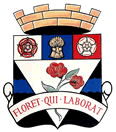 Mossley was never officially granted a coat-of-arms by the College of Heralds. However, the device described and shown below was used for civic purposes. The following explanation of its meaning is given in "The Story of Mossley: ancient and modern" by Alfred Holt (1974).
Mossley was never officially granted a coat-of-arms by the College of Heralds. However, the device described and shown below was used for civic purposes. The following explanation of its meaning is given in "The Story of Mossley: ancient and modern" by Alfred Holt (1974).
The Mossley coat-of-arms shows three square divisions on the top portion of the shield. The middle division contains a sheaf of corn and denotes that part of Mossley which is in Cheshire. The two side divisions show the red rose of Lancashire and the white rose of Yorkshire. The lower space of the shield is filled with a cotton plant which represents the chief industry of the town in 1885 when Mossley first became a borough. The wavy lines across indicate the River Tame. The Latin motto means 'He flourishes who labours'.
History of Mossley
Early History
The name 'Mossley' has two elements - 'Moss' meaning a bog or swamp and 'leah' indicating a clearing in a wood. Although Assheton Records state that in 1309, Henry, son of William de Mossley, claimed land which afterwards became known as the Hamlet of Mossley, prior to the 19th century, Mossley was included in the manor of Ashton and had no separate existence. The town was situated in three separate counties - Yorkshire, Lancashire and Cheshire - and its three parts are still clearly defined by the positions of the parish churches; St. George's (Lancashire), St. John the Baptist's (Yorkshire) and All Saints (Cheshire). This created many administrative problems even when, after the passing of the 1884 Local Government Act, Mossley was allowed its own Local Board of Commissioners. It was also one of the main reasons for the granting of the town's Charter of Incorporation on March 13, 1885, despite the relatively small size of the borough, which had only 13,000 inhabitants.
In 1750 Mossley was still a hamlet, the main industries being farming and woollen cloth manufacture. Many of the houses were three storeys high, and it was here, and at several farms, that wool was carded, spun and woven in the attics. There are terraces of handloom weavers cottages in Mossley still, such as those on Staley Road, Stockport Road and Carrhill Road, though many have been modernised.
Industrialisation
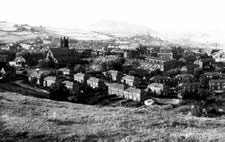 Gradually mills were built to house the carding, spinning and weaving processes, the first being Andrew Mill on the Tame was granted water rights in 1765. Scout Mill and Clough Mill followed and, in 1820, Nathaniel Buckley & Sons built Old Roughtown and Carr Hill Mills.
Gradually mills were built to house the carding, spinning and weaving processes, the first being Andrew Mill on the Tame was granted water rights in 1765. Scout Mill and Clough Mill followed and, in 1820, Nathaniel Buckley & Sons built Old Roughtown and Carr Hill Mills.
Steam-power was slow in coming into use in Mossley due to the abundance of water and the comparative difficulty of getting coal but, by 1829, Brookbottom Mill was being worked by steam power. Woollen manufacture reached its peak in Mossley in 1830 when there were 20 mills in the town but, with the invention of the power loom, the manufacture of cotton made rapid strides after 1830 when the Mayall brothers, John and George, took over Bottoms' Old Mill and installed new machines to commence cotton-spinning. Five years later they purchased the freehold of the site and began making improvements and extensions, including the leasing of Scout Mill, where a steam-engine was installed in favour of water power, and the building of two new mills. By 1841, after the Mayalls pioneering, there were seven mills operating in Mossley and a Mechanics Institute which opened in 1839. The Mayall partnership dissolved in 1846, George taking control of the two new mills while John kept the older one.
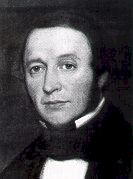 The Mayall Brothers
The Mayall Brothers
John Mayall exerted a great influence on the growth of Mossley. Born on December 31, 1803, near Lydgate, he worked first in a woollen factory, from the age of six, then in a cotton mill. A staunch Liberal, his early struggles made him sympathise with the working-classes and he worked for the improvement and well-being of Mossley. He was chairman of the Board of Surveyors, a member of the Lighting Inspectors, a member of Ashton board of Guardian and, for nearly 20 years, on the Commission for Peace in the County.
In 1848, John Mayall lent the Railway Company £1,600 to buy the land for a railway to be built over a period of three years. The opening of the railway in 1849 considerably improved the value of Mayall's property.
John Mayall was closely connected with the Abney Congregational Church in Mossley where he regularly worshipped. He was instrumental in the building of the church and allowed the services to be held in one of his mills until its completion in 1854.
During the Cotton Famine when 60 per cent of the Mossley workforce was unemployed, Mayall was one of the few to keep his mills running without interruption. By 1876, he possessed more mule spindles than any other private cotton spinning firm in the world and, on his death on the March 11 later that year, the Ashton-under-Lyne Reporter noted: "It was felt that another link that connected the present with the past had been severed, that one of the most persevering and successful of the memorable cotton spinners of Lancashire had been cut off and that Mossley had at once lost its founder and a generous benefactor."
John's younger brother, George Mayall, also made his fortune in the cotton industry in Mossley and between 1861-1863, at a cost of over £60,000, he had a private house Whitehall built for his wife who unfortunately died before the building was completed. As a result, George Mayall lived there for only a short time and the building eventually became Mossley Town Hall. The town had received its Charter of Incorporation in 1885, its first Mayor being George Andrew and the second, in 1886 for a period of two years, John Mayall's son. The Corporation further confirmed its association with the Mayall family with the purchase of the Whitehall estate in 1891 for £4,000, and Whitehall was officially opened as the Town Hall by Joseph Fearns Lawton on May 7, 1892.
The Twentieth Century
In July 1904 the electric tramway system opened in Mossley as a result of the Stalybridge, Hyde, Mossley and Dukinfield Tramways and Electricity Act, passed in 1901. Trams ran from Mossley to Ashton, via Heyrod and to Stalybridge via Millbrook. This service lasted until 1925 when Ashton-under-Lyne was granted permission to run motor buses to Brookbottom.
By 1913 the cotton trade had reached its maximum development in Mossley with a million and a half spindles and 600 looms all working for 55.5 hours per week. This gave rise to a demand for labour larger than a town the size of Mossley could satisfy and, in 1914, with the outbreak of the war, the mills lost half of their male operatives. During the war years the mills were busy with the essential textile needs of the services and, immediately afterwards, in making up for four years of lost production for the civilian trades. However, by the 1920s, trade had slackened. Most of the mills in Mossley were old and hopelessly inefficient, unable to bear the weight of new machines, or to be improved. Unemployment became a serious problem in the 20s and 30s at its height 56 per cent of the workforce was idle and this was so for many months. Soup kitchens were set up to relieve the distress but, by 1926, Mossley was a desperately poor town and the population had dropped from 13,205 in 1911 to 12,041 in 1931.
The Town Council formed a New Industries Committee which succeeded in attracting a French Textile Firm and in 1932 Mossley Wool Combing and Spinning Company was established at Milton Mills. The onset of the Second World War created a demand for labour in many industries and peace brought a shortage of consumer goods, so that a variety of trades were introduced into the town. The Mossley Wool Combing and Spinning Company prospered and became the town's largest employer. The population continued to fall until 1971, when the census showed an increase from 9,795 in 1961 to 10,056, largely as a result of urban pressure. The 1991 population was 10,089.
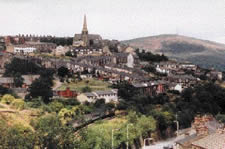
Facts About Mossley
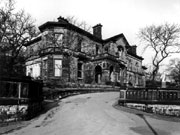
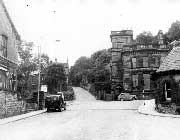
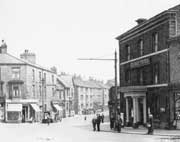
A comprehensive selection of historical photographs can be found at www.tameside.gov.uk/history
- Mossley in the eighteenth century was a scattered farming community with a strong domestic-based woollen industry. The modern town was spread across three counties, Top Mossley being in Ashton township in Lancashire, Micklehurst in the township of Tintwistle in Cheshire, and the remainder forming part of the Quickmere division of Saddleworth township in the West Riding of Yorkshire. The majority of land was owned by the Stamford estate but, unlike in Ashton, this did not play an active part in the early development of the town. As a result of the division of Mossley between three townships, no census returns are given for the town until after is unification under a local board in 1864 but contemporary accounts of the town can be used to give a rough guide to its growth.
- St. George's Church was first consecrated in Mossley in 1757 having cost £600, but in 1879 it has become dilapidated and in that year the foundation stone of a new building was laid. It was consecrated in 1882. The photograph shows that it was originally built without a tower and it was five years before the tower was added, in 1887, to house the bells and a clock. The bells were installed in March 1888 and the clock, was given to Mrs Kershaw an Miss Beswick, in March 1887.
- St. Joseph's Church, in 1856 a Catholic mission under the patronage of St. Bridget was established in Mossley by the Rev. William Wilson. Mass was said in a room in a building known as the old Garrett (above the Old House at Home public house on Neild Street). In 1862 the Rev. Charles Grymonprez built another church. It was dedicated to St. Joseph and could accommodate 300. From 1864 the hall next door to the church building also served as the elementary school with a screen separating the altar during school hours. In 1965 this building was replaced by a new church.
- John Mayall's life (1803 - 1878) was typical of that of many Victorians who rose from poverty to extreme wealth via the cotton trade, and he exerted great influence on the growth of Mossley. He started work at the age of seven in a woollen mill in Uppermill and such was his success that by 1876 his was the largest privately owned cotton spinning firm in the world. A Congregationalist, he was instrumental in the building of Abney Church and, until the Church was completed in 1855, allowed services to be held in the Britannia Mill which he owned with his brother George. John Mayall was prominent in civic affairs: among many other duties he was Chairman of the Board of Surveyors and a member of the Ashton Board of Guardians. During the latter part of his life he lived at Highfield House. In 1886 his son became the second Mayor of Mossley.
- Whitehall was designed by William Williamson and built for George Mayall (brother of John Mayall) for his wife Esther, between 1861 and 1864. It was built in the Italianate style, it is of a symmetrical plan of eight bays and two storeys. The stone used for the building is reputed to have come from Macclesfield, while the interior of the house was decorated with heraldic motifs and statutory. The building of the house cost over £60,000. George Mayall is said to have remarked that he kept note of the cost until it reached £60,000 and then gave up. Esther Mayall died before the house was completed and George only used part of the building. It was put to fuller use when Edmund Less Mayall, George's son, brought his wife there. The grounds were later given to the town, but the building was purchased by Mossley on his death for the sum of £4000 and used as Mossley Town Hall until 1974.
- Scout Tunnel in Mossley is 200 yards long. If you were to stand at the top of Scout Tunnel looking towards the railway line in the direction of Woodhead Tunnel, there you will see on the hillside a horse which is cut out of heather.
- The population of Mossley was recorded at 10,089 during the 1991 census - making it the least populated of the 9 towns in the Borough of Tameside.
- Private Sykes of the 27(S) Battalion of the Northumberland Fusiliers was born in Mossley in 1885 and was awarded the Victoria Cross for bravery in action on 19th April 1917 near Arras in France.
- Tameside's first Co-op was opened in 1856 on Arundel Street, Mossley.
- Austin Hopkinson (1879 -1962) - Local industrialist and inventor, was also an MP, first for the Prestwich constituency in October 1918 and then for the Mossley constituency from December 1918 to May 1929 and again from October 1931 until his defeat in July 1945.
Places of Interest in Mossley
George Lawton Hall
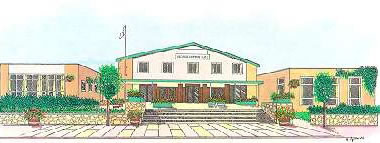
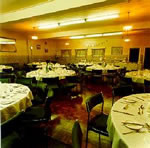
Situated in the heart of Mossley, this large civic building offers a large range of events from Fitness Classes to Tea Dances. There are two elegant rooms available for hire. The George Lawton Hall is the main function suite, this is ideal for a large celebration, conference, dinner or exhibition. The suite offers concert seating for 500, cabaret seating for 400 and a dining capacity for 350. Over the years George Lawton Hall has become Mossley Amateur Operatic and Dramatic Society's permanent headquarters for all their productions, rehearsals and meetings.
The Dining Suite at George Lawton Hall
This room offers ideal surroundings for smaller functions, family celebrations, business luncheons and seminars. It offers a seating capacity of 150 people.

